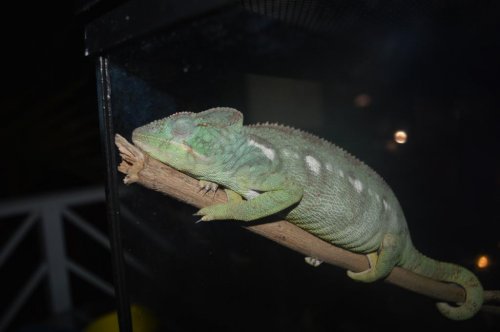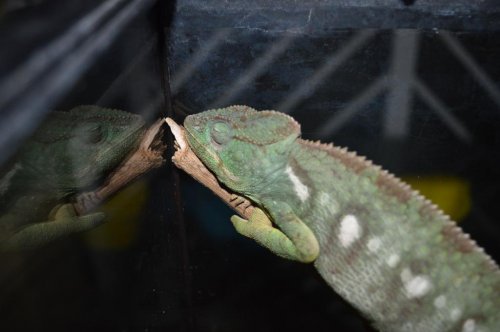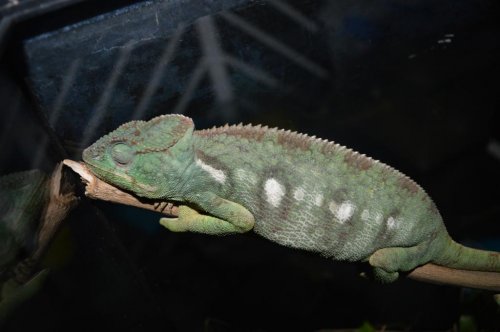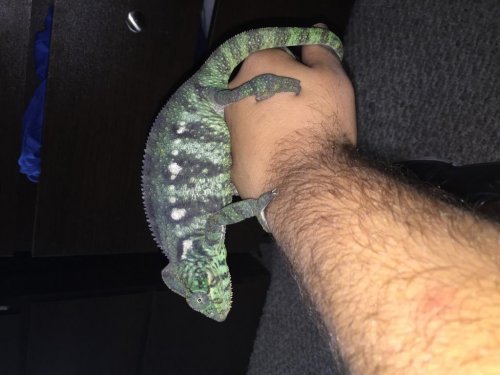i found this chameleon and im trying to figure out what type of chameleon it is. ive done some research and checked out a few pictures of different chameleons but i just cant find it. im actually trying to keep him and im building him a 3 ft x 2ft x 2ft cage and i already have all his supplies for the cage including a live weeping fig plant. as you can tell in the pictures hes a big chameleon but ive been able to get him onto my hand about twice since i got him and he was not tried to bite me. i have heard him hissing though.













